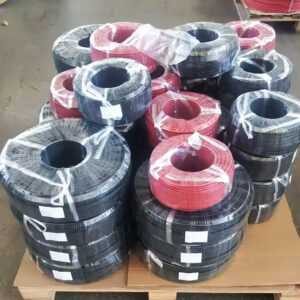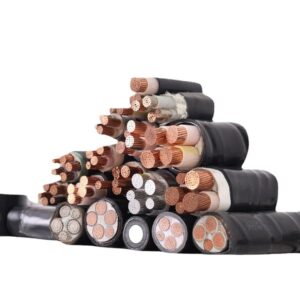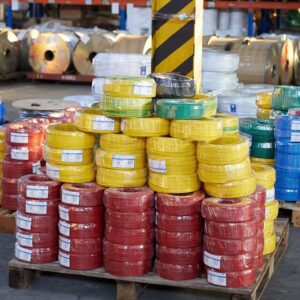When selecting power cables for industrial, commercial, or infrastructure projects, understanding the differences between high voltage cables (1kV–1000kV) and low voltage cables (below 1kV) is crucial. These two cable types serve distinct purposes in power transmission and distribution, with variations in construction, safety standards, and applications. In this guide, we’ll compare their key characteristics, helping engineers, procurement specialists, and project managers make informed decisions.
1. Voltage Classifications: What Defines High & Low Voltage?
High Voltage Cables (HV)
- Voltage Range: 1kV to 1000kV
- Primary Use: Long-distance power transmission, grid distribution, and high-power industrial applications.
- Key Features:
- Thicker insulation to prevent electrical breakdown.
- Often armored for mechanical protection (especially underground/submarine cables).
- Materials: XLPE (Cross-Linked Polyethylene) or EPR (Ethylene Propylene Rubber) insulation.
Low Voltage Cables (LV)
- Voltage Range: Below 1kV (typically 50V–1000V).
- Primary Use: Building wiring, household appliances, and short-distance power distribution.
- Key Features:
- Lighter and more flexible.
- PVC or rubber insulation.
- Common in residential, commercial, and light industrial settings.
2. Construction Differences
| Feature | High Voltage Cables | Low Voltage Cables |
|---|---|---|
| Conductor | Copper or aluminum (stranded for flexibility) | Copper or aluminum (solid or stranded) |
| Insulation | XLPE, EPR, or oil-impregnated paper | PVC, rubber, or thermoplastic |
| Shielding | Conductor & insulation shields to manage electric fields | Rarely shielded (except for EMI-sensitive applications) |
| Armoring | Often steel-wire armored for underground use | Usually unarmored (unless specified for industrial use) |
| Outer Sheath | UV-resistant, waterproof (PE or PVC) | Standard PVC or LSZH (Low Smoke Zero |
3. Applications: Where Are They Used?
High Voltage Cables
✔ Power Grids: Transmitting electricity from power plants to substations.
✔ Renewable Energy: Connecting wind/solar farms to the grid.
✔ Industrial Plants: High-power machinery and heavy equipment.
✔ Underground/Submarine Cables: Long-distance power transmission.
Low Voltage Cables
✔ Building Wiring: Homes, offices, and commercial spaces.
✔ Consumer Electronics: Appliances, lighting, and small devices.
✔ Control Systems: Automation panels and signal transmission.
4. Safety & Installation Considerations
High Voltage Cables
⚠ Higher Risk: Requires specialized handling due to electrical arcing risks.
⚠ Strict Regulations: Must comply with IEC, IEEE, and national safety standards.
⚠ Professional Installation: Needs trained technicians for termination and jointing.
Low Voltage Cables
✔ Easier Installation: Can be handled by electricians with standard training.
✔ Lower Safety Risks: Reduced risk of fatal electric shock (compared to HV).
5. Cost & Lifespan Comparison
| Factor | High Voltage Cables | Low Voltage Cables |
|---|---|---|
| Initial Cost | Higher (due to materials & shielding) | Lower |
| Maintenance | Requires periodic testing | Minimal maintenance |
| Lifespan | 30–50 years (if properly installed) | 20–30 years |
Conclusion: Which One Do You Need?
Choosing between high voltage and low voltage cables depends on your project’s power requirements, distance, and environmental conditions. HV cables are ideal for heavy-duty transmission, while LV cables suit everyday electrical distribution.
Need expert advice on cable selection? Contact us for customized solutions!







